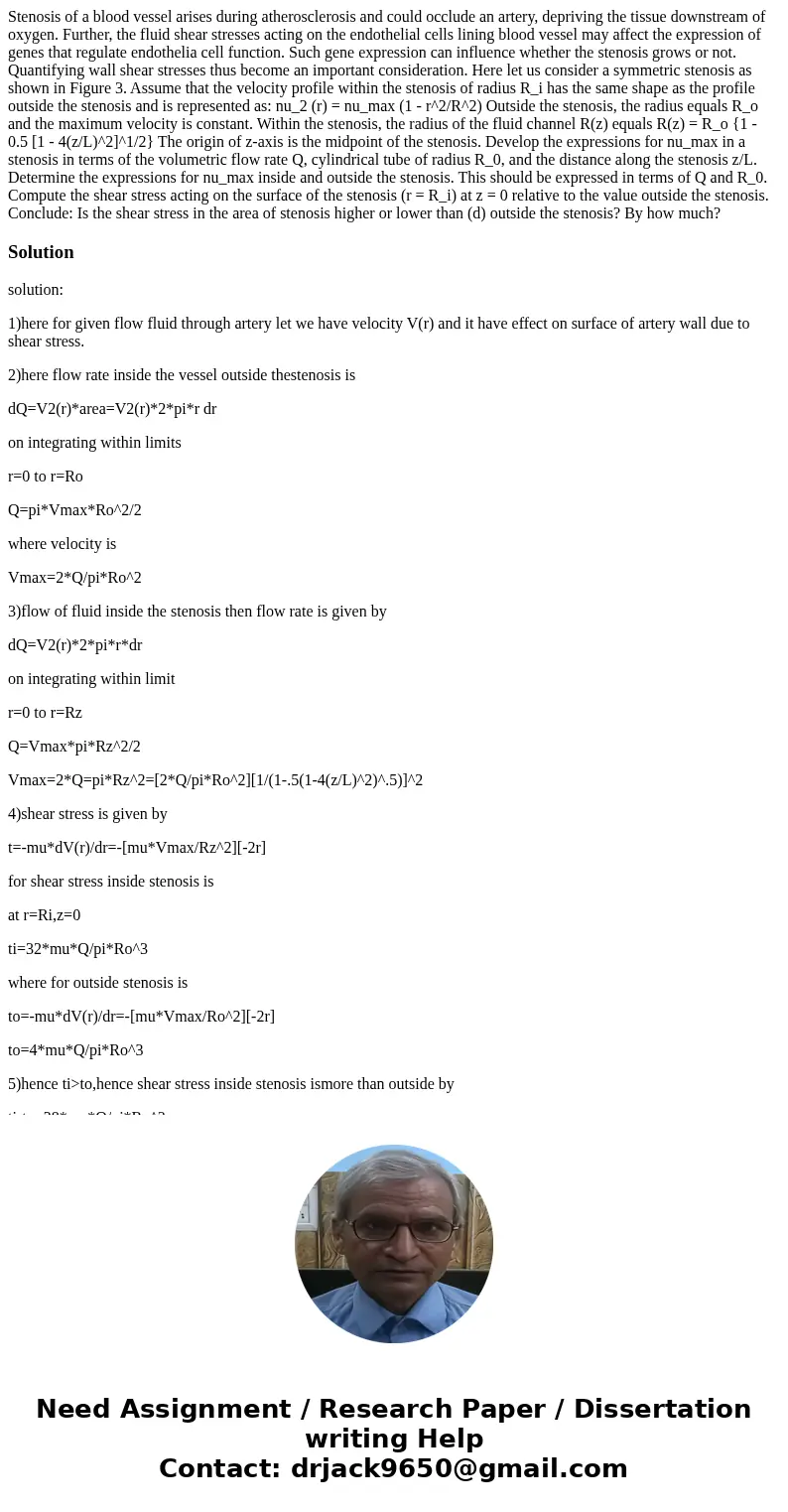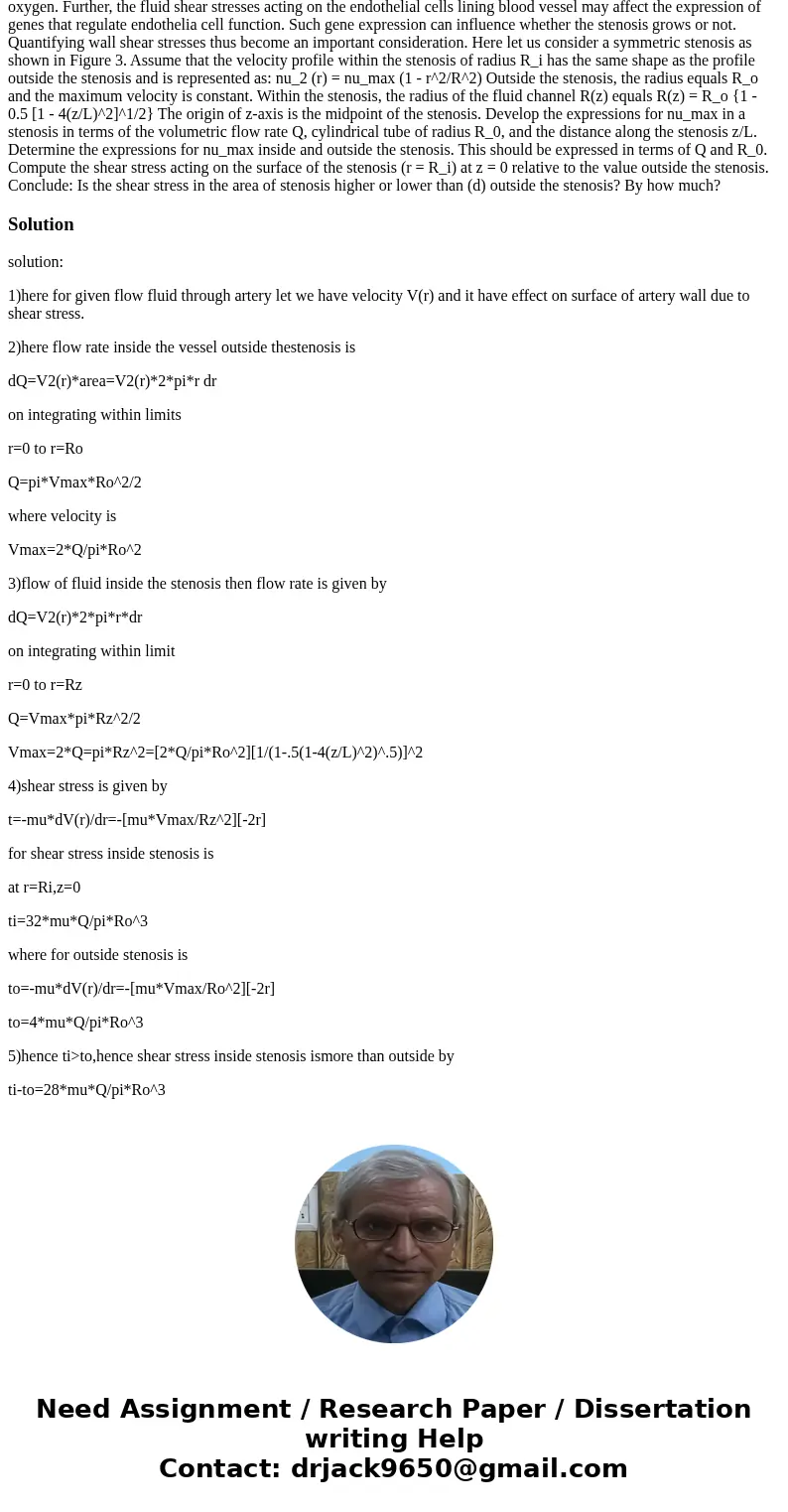Stenosis of a blood vessel arises during atherosclerosis and could occlude an artery, depriving the tissue downstream of oxygen. Further, the fluid shear stresses acting on the endothelial cells lining blood vessel may affect the expression of genes that regulate endothelia cell function. Such gene expression can influence whether the stenosis grows or not. Quantifying wall shear stresses thus become an important consideration. Here let us consider a symmetric stenosis as shown in Figure 3. Assume that the velocity profile within the stenosis of radius R_i has the same shape as the profile outside the stenosis and is represented as: nu_2 (r) = nu_max (1 - r^2/R^2) Outside the stenosis, the radius equals R_o and the maximum velocity is constant. Within the stenosis, the radius of the fluid channel R(z) equals R(z) = R_o {1 - 0.5 [1 - 4(z/L)^2]^1/2} The origin of z-axis is the midpoint of the stenosis. Develop the expressions for nu_max in a stenosis in terms of the volumetric flow rate Q, cylindrical tube of radius R_0, and the distance along the stenosis z/L. Determine the expressions for nu_max inside and outside the stenosis. This should be expressed in terms of Q and R_0. Compute the shear stress acting on the surface of the stenosis (r = R_i) at z = 0 relative to the value outside the stenosis. Conclude: Is the shear stress in the area of stenosis higher or lower than (d) outside the stenosis? By how much?
solution:
1)here for given flow fluid through artery let we have velocity V(r) and it have effect on surface of artery wall due to shear stress.
2)here flow rate inside the vessel outside thestenosis is
dQ=V2(r)*area=V2(r)*2*pi*r dr
on integrating within limits
r=0 to r=Ro
Q=pi*Vmax*Ro^2/2
where velocity is
Vmax=2*Q/pi*Ro^2
3)flow of fluid inside the stenosis then flow rate is given by
dQ=V2(r)*2*pi*r*dr
on integrating within limit
r=0 to r=Rz
Q=Vmax*pi*Rz^2/2
Vmax=2*Q=pi*Rz^2=[2*Q/pi*Ro^2][1/(1-.5(1-4(z/L)^2)^.5)]^2
4)shear stress is given by
t=-mu*dV(r)/dr=-[mu*Vmax/Rz^2][-2r]
for shear stress inside stenosis is
at r=Ri,z=0
ti=32*mu*Q/pi*Ro^3
where for outside stenosis is
to=-mu*dV(r)/dr=-[mu*Vmax/Ro^2][-2r]
to=4*mu*Q/pi*Ro^3
5)hence ti>to,hence shear stress inside stenosis ismore than outside by
ti-to=28*mu*Q/pi*Ro^3


 Homework Sourse
Homework Sourse